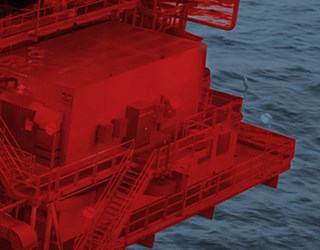NEWS The Role of Proper Centralization in Mitigating Differential Sticking while Running Casing
In oil and gas drilling, where efficiency and cost-effectiveness are paramount, differential sticking poses a significant challenge to operations. Differential sticking occurs when the drill pipe or Casing becomes firmly lodged against the formation due to pressure imbalances between the wellbore and the surrounding rock. This occurrence can severely affect the drilling and casing progress which ultimately incurs substantial time and cost implications for operators. However, the strategic utilization of centralizers emerges as a critical solution in mitigating the impact of this pervasive issue, ultimately enhancing drilling efficiency and reducing operational expenditures.
What is Differential Sticking?
Differential sticking occurs when the hydrostatic pressure exerted by the drilling fluid in the wellbore exceeds the pressure exerted by the formation fluid in the permeable rock formation. This pressure differential causes the pipe to adhere to the formation wall, effectively becoming stuck. The phenomenon is exacerbated in permeable formations, particularly where pressure is depleted or a high mud overbalance pressure exist (one of the valid factors in modern day prevalence of 'under balanced drilling') and zones of high deviation of the wellbore profile, where high lateral loads bend the pipe and create small clearances between pipe and borehole wall.
Whilst a pipe is in motion there is a thin layer of drilling mud lubricating between the filter cake and the pipe and the continual leaching of fluid into the formation is continually compensated for. However, if the pipe movement is stopped the casing virtually seals off this continually replenished interface lubricating zone and the wall cake continues to leach fluid into the formation. The result is for the pipe to sink into the cake, thereby increasing the surface area of pipe in contact with the cake. As the pressure on the pipe is that of the borehole fluids, together with friction between pipe and cake, a situation exists such that once the onset of any differential sticking occurs, the magnitude can increase rapidly.

Cross sectional view of differential pressure sticking caused by low reservoir pressure and/or high well bore pressures.

With time the drill string can become further embedded in the filter cake.
The consequences of differential sticking are multifaceted and can have far-reaching effects on drilling operations. Firstly, it leads to downtime as crews work to free the stuck pipe, resulting in lost drilling time and decreased overall productivity. Moreover, the remedial measures required to release the stuck pipe, such as applying excessive force or deploying costly fishing tools, incur additional operational expenses and pose safety risks to personnel and equipment.
The Role of Centralizers in Mitigating Differential Sticking
Centralizers play a crucial role in mitigating the occurrence of differential sticking by promoting optimal wellbore geometry and reducing the risk of pipe contact with the formation. By ensuring proper centralization of the casing within the wellbore, centralizers help maintain consistent standoff between the pipe and the formation wall, thereby minimizing the potential for differential pressure build-up and sticking.
The centralization process involves several key steps to ensure optimal casing placement and effective mitigation of differential sticking:
- Wellbore Analysis: Conduct a thorough analysis of the wellbore geometry, formation properties, and drilling conditions to determine the appropriate centralization strategy.
- Centralizer Selection: Choose centralizers that are suited to the specific wellbore characteristics and operational requirements. Factors to consider include centralizer type (bow-spring, rigid, or composite), size, quantity, and placement along the casing string.
- Installation: Proper installation of centralizers is critical to their effectiveness. Centralizers should be evenly spaced along the casing string and securely attached to prevent movement or dislodgment during installation and cementing operations.
- Cementing: During the cementing process, centralizers facilitate the uniform distribution of cement around the casing circumference, creating a robust cement sheath that enhances wellbore integrity and reduces the risk of differential sticking.
- Monitoring and Evaluation: Monitor casing placement and cementing operations in real-time to ensure that centralizers are functioning as intended. Post-cementing evaluation techniques, such as cement bond logs, can provide valuable insights into cement coverage and casing centralization effectiveness.
Impact on Time and Cost
The impact of differential sticking on drilling operations is twofold: it prolongs drilling durations and inflates operational costs. Each instance of stuck pipe necessitates downtime for remediation, resulting in lost rig time and reduced overall drilling efficiency. Moreover, the remedial measures employed to release the stuck pipe, such as jarring operations or sidetracking, require additional resources and incur substantial expenses.
By effectively mitigating the occurrence of differential sticking, centralizers contribute to significant time and cost savings in drilling operations. By minimizing downtime and the need for costly remedial actions, centralizers help operators maximize drilling efficiency and optimize overall project economics.
Conclusion
Differential sticking poses a formidable challenge to oil and gas drilling operations, with profound implications for time, cost, and operational efficiency. However, by leveraging the strategic use of centralizers, operators can mitigate the risk of sticking and enhance drilling performance. Investing in quality centralization solutions not only minimizes downtime and operational expenses but also improves safety and reliability in drilling operations. As the industry continues to pursue advancements in drilling technology and operational practices, centralizers stand out as indispensable tools in the quest for greater efficiency and cost-effectiveness in oil and gas exploration and production.

